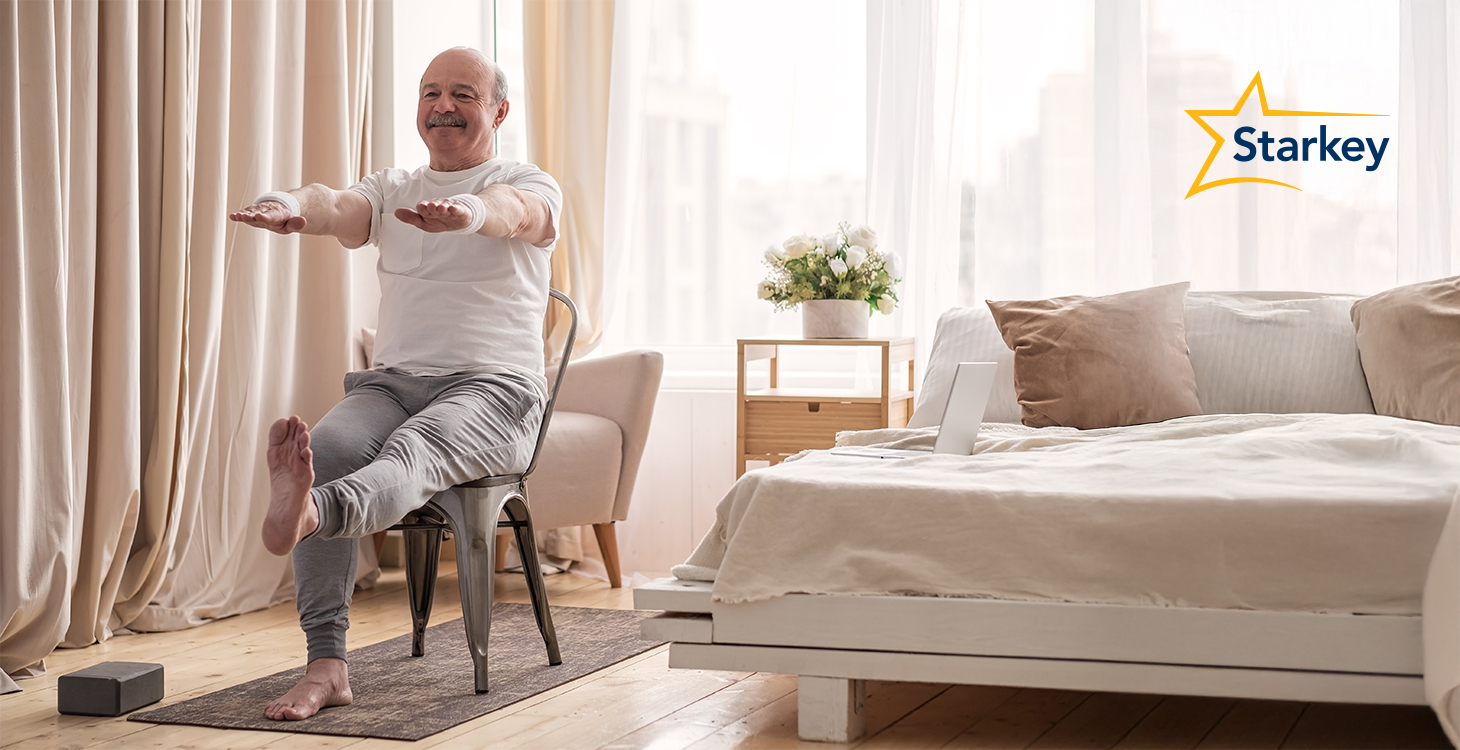It’s no secret that balance plays an important role in our ability to perform daily activities. And as we age, it becomes even more critical to monitor our balance to maintain not only our autonomy—but also our physical safety.
According to the Centers for Disease Control and Prevention, 1 in 4 older adults report falling each year—that’s over 14 million people. Unfortunately, the likelihood of falls increases as we grow older, and one common contributor may surprise you—untreated hearing loss.
Studies prove that untreated hearing loss can increase the risk of falls by 30%. And the more severe our hearing loss is, the more our chances of falling increase.
So, what is the connection between hearing loss and the loss of balance? Let’s discuss.
Connection between hearing loss and balance starts in the ear
Did you know that the inner ear is directly tied to balance? The inner ear is home to your vestibular system, which is a part of the inner ear and brain that controls our balance (and eye movements).
The vestibular system is made up of three loop-shaped canals. These canals focus on the rotation of our head. At the base of these canals are the utricle and saccule, which detect our head’s position in gravity during up-and-down movement (example: moving up and down in an elevator) and back-and-forth motion (example: driving backwards and forwards in our vehicle).

Ultimately, whenever the head moves, the vestibular system sends signals through the vestibular nerve and to the brain, for processing. Using the information it receives from our inner ear, vision, and movement sensors in our skin, muscles, and joints, the brain then determines the position of the body—to help us maintain our balance.
So, how does hearing loss impact balance?
There are several ways that hearing loss can impact our balance:
- Ear shares close proximity to vestibular system
First off, the cochlea of the ear (which facilitates hearing) and the vestibular system are situated very close to one another. So close, in fact, that they share fluid and neural pathways.
Because of this, damage in the cochlea can impact the vestibular system—making it easier to understand why the occurrence of vestibular impairment is high in adults with sensorineural hearing loss (this type of hearing loss involves damage to the inner ear or auditory nerve).
- Cognitive load
When we have hearing loss, our brain must work a lot harder to help us hear and decipher conversation. As a result, it may be less able to help with our balance and gait.
- Decreased awareness
Similarly to loss of vision, hearing loss can reduce awareness over our surroundings, resulting in tripping, falling, or worse.

Hearing technology can help maintain balance, reduce falls
Now, for the good news: Being proactive with our hearing health can help us maintain our balance—and safety. Research shows that wearing hearing aids can reduce our risk of falling by 50%. And that’s only the beginning.
Did you know that Edge AI hearing aids can help us gain an awareness of our balance as well as help maintain it? By connecting these hearing aids with the My Starkey app, we can benefit from exclusive access to the Balance Assessment feature.
Located in the Health section of the app, the Balance Assessment is a self-guided evaluation designed to give us an awareness of our balance and how it compares to our peers. After all, awareness of any balance concerns is the first step toward maintaining or improving overall wellness.

How the My Starkey Balance Assessment works
The My Starkey Balance Assessment is divided into three easy-to-follow parts:
1. Take initial screening to identify balance concerns
First, we will answer some questions related to our overall balance to help identify any potential balance concerns. If the Balance Assessment does not identify any apprehension based on our responses, it will encourage us to continue with the next step of the assessment—balance exercises.
If the feature does identify balance concerns, it will recommend consulting with a medical provider before continuing with the evaluation.
2. Do exercises designed to assess balance
This is where the cool hearing technology part comes in: The sensors in our hearing aids will monitor our movements as we perform a series of standing and chair exercises. These exercises will assess our walking balance, leg strength, and overall steadiness.
3. Get results (summary, peer comparison, and next steps)
The Balance Assessment results will give us an idea of our balance performance and how it compares to our peers. (Reminder: Results are based on a self-guided Balance Assessment. If we have any concerns about them, it’s best to discuss with our primary medical provider.)
Once we complete the Balance Assessment and gain a better understanding of our balance status, we may consider trying to maintain or improve it. Again, My Starkey has the solution—Balance and Stability exercises* located in the Learn section of the app.
Learn more from a hearing care professional
Treating our hearing loss is an important step to take for maintaining our safety, independence, and overall quality of life. So, if you want to start enjoying life with better hearing and all the personal benefits that come with it, schedule an appointment with a hearing care professional.
Don’t have one? No problem. Simply type your zip code in here and you’ll find a list of local hearing care professionals who you can test your hearing, consult with you about your options, and even demo our latest hearing aid technology.
